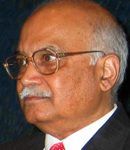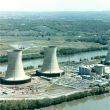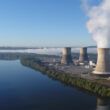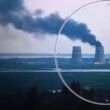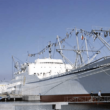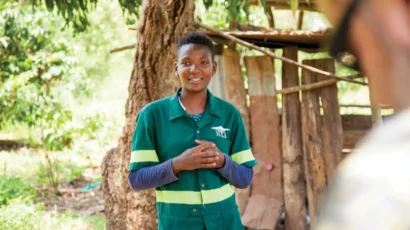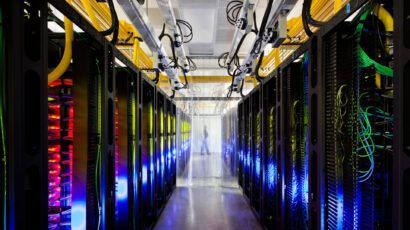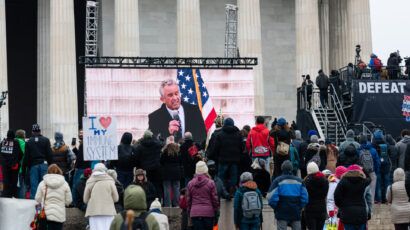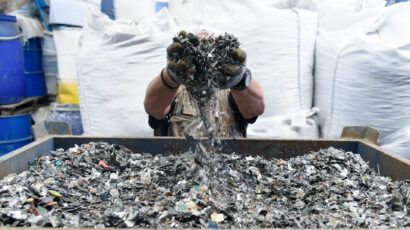Despite qualms, fuel banks hold promise
By Ramamurti Rajaraman, August 30, 2012
The idea of establishing a fuel bank for low-enriched uranium (LEU) was conceived as long ago as President Dwight Eisenhower's "Atoms for Peace" program. The primary idea behind a fuel bank at that time was to encourage nations to adopt civilian nuclear energy programs. But due to Cold War tensions, little progress was made toward a fuel bank until the new millennium began. Over the years, the main motivation for establishing a repository of LEU shifted to nuclear nonproliferation: Signatories to the Nuclear Non-Proliferation Treaty (NPT) are permitted to maintain enrichment facilities for peaceful nuclear energy programs, but the same facilities might be used to produce weapons-grade uranium.
This nonproliferation motif may be one reason that fuel bank proposals are unpopular among many potential customer nations. Because most non-nuclear weapon states in the developed world already maintain, or otherwise have access to, enrichment plants — as, for instance, through Urenco, a consortium with British, Dutch, and German ownership — a fuel bank's most likely customers are developing nations. Many of these countries, gradually progressing out of the "developing" category in both economic and technological terms, now feel ready to acquire and operate nuclear reactors. They are attracted to nuclear energy partly because their electricity requirements have increased and partly because they would like to demonstrate their emerging technological capabilities.
But from an ideological and strategic perspective, developing nations tend to view fuel bank proposals with suspicion — as yet more examples of the nuclear "haves" trying to keep the "have-nots" out of their club (rather like NPT itself). Many developing countries that suffered during the colonial era can be prone to interpreting Western initiatives, sometimes with justification and sometimes out of knee-jerk paranoia, as attempts by past oppressors to keep them down technologically and militarily.
At a more concrete level, some developing countries fear that a fuel bank owned or controlled by a power bloc or an individual nation might choose not to provide fuel to a specific country for geopolitical reasons. That is, LEU might be used as a tool of political blackmail — something with which producers of nuclear fuel could extract cooperation from buyers.
Such fears should be allayed by the fact that two proposed fuel banks — one of which is already stocked with uranium (though, to my knowledge, it has no customers yet) and the other of which is at an advanced stage of development — have a strong international flavor, despite originating with the two Cold War superpowers. In March 2010, the International Atomic Energy Agency (IAEA) signed an agreement with Russia to establish a reserve of LEU at the International Uranium Enrichment Centre in Angarsk, Russia. The facility was inaugurated in December 2010 and stocked with uranium. This fuel bank is internationally managed and open to IAEA member states that experience "noncommercial disruption of supply." It is the first global repository of LEU in history.
In a similar vein, in 2006 the Nuclear Threat Initiative (NTI), with backing from the investor Warren Buffett, pledged $50 million to the IAEA toward establishing an international fuel bank, on the condition that nations pledge a combined $100 million. Money came in from the European Union, the United States, Kuwait, Norway, and the United Arab Emirates, and the IAEA approved NTI's idea in December 2010. Under the current version of the plan, the repository would be located in Kazakhstan, but with the IAEA retaining complete control of the site as well as ownership of the nuclear material stored there. It is hoped that the facility might open in late 2013. Perhaps the IAEA's high level of control over the Russian and Kazakh facilities will address developing countries' traditional fears that they will be discriminated against.
An additional feature of both these proposed facilities — one that is unpopular with some potential customers — is a limitation on how much fuel could be purchased from the repositories. The facility in Russia stores 120 metric tons of LEU, sufficient for fueling a typical 1000-megawatt light water reactor for more than four years. The proposed Kazakh facility is envisioned as storing 60 metric tons. These modest capacities are consistent with the IAEA's view that a fuel bank is meant only for emergencies; a fuel bank should be used only when market arrangements have failed. But this entirely reasonable condition, meant to protect the interests of existing private-sector LEU producers, disappoints some nations that might have hoped to obtain cheap nuclear fuel from a fuel bank.
But there is a fear that a fuel bank could be a means of pressuring non-nuclear weapon countries in the developing world into purchasing all their fuel on the open market or through a fuel bank, in effect foregoing their rights under the NPT and IAEA statutes to build enrichment plants. Many developing countries are not eager to renounce their right to enrich. Brazil began enriching uranium for civilian purposes in 2009, and nations like Argentina and South Africa have discussed doing likewise. This desire to enrich stems partly from concerns over energy security, but also in some cases from commercial considerations. Considerable reserves of uranium lie within some non-weapon states, and a few of these states have sufficient technological skill to construct enrichment facilities. These countries could increase the value of their uranium by enriching it for sale as fuel. If fuel-bank schemes were to discourage nations from building enrichment plants, they could interfere with what these countries regard as a legitimate commercial opportunity.
Notwithstanding these concerns, fuel banks could still prove beneficial for developing nations that are interested in nuclear power but are uninterested in nuclear weapons. With a credible international authority like the IAEA guaranteeing the availability of LEU, such countries could build power reactors without having to build expensive enrichment facilities. These facilities in any case can require a stable of a dozen reactors to absorb the fuel they produce, but most of a fuel bank's likely customer nations need a reactor or two at most. Their power requirements do not exceed what one or two reactors can provide, and their electricity grids are not capable of accommodating more.
Significant amounts of effort and funding have gone toward establishing fuel banks. It is my hope that enough nations will take advantage of them to justify the investment.
Editor's note: This article was updated on September 14, 2012, to correct an editorial mistake on the details of the structure of international fuel banks.
Topics: Nuclear Energy
Share: [addthis tool="addthis_inline_share_toolbox"]
